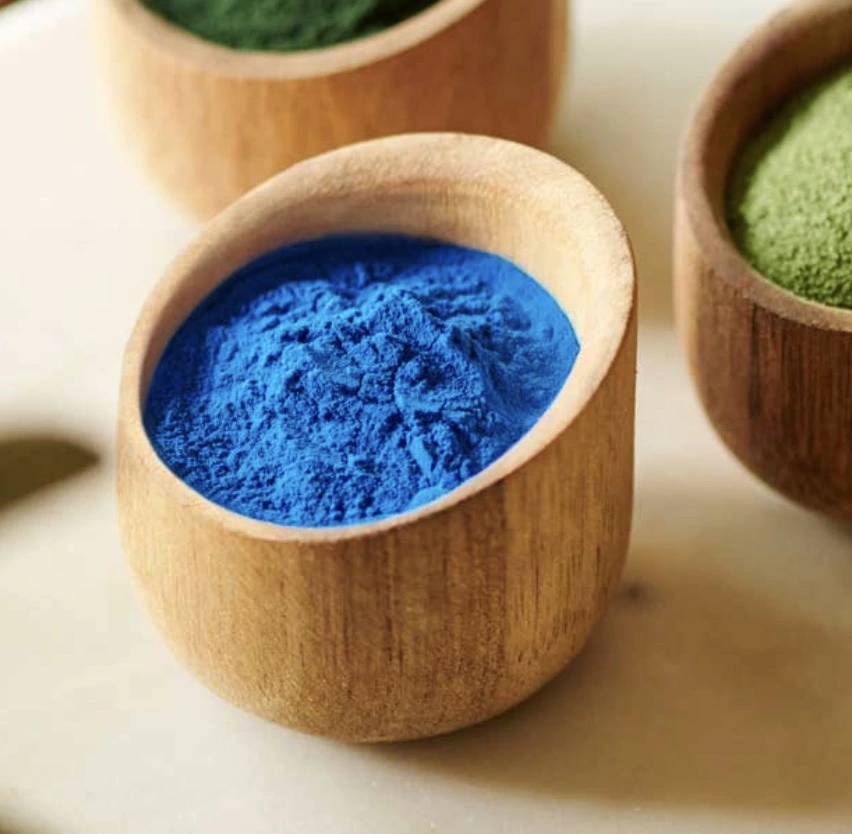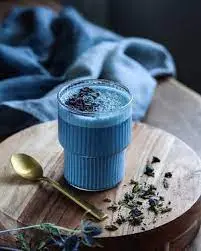Meso Zeaxanthin Powder Guide: Specs, Applications & Buying Tips
Meso zeaxanthin powder has garnered significant attention in the health and wellness industry due to its potential benefits for eye health. As a powerful antioxidant and carotenoid, this compound plays a crucial role in protecting the macula, the central part of the retina responsible for sharp, detailed vision. In this comprehensive guide, we'll delve into the specifications of meso zeaxanthin powder, explore its applications, and provide essential buying tips to ensure you're getting a high-quality product.

Understanding Meso Zeaxanthin Powder Specifications
When considering meso zeaxanthin powder, it's vital to understand its specifications to ensure you're getting a product that meets your needs. Here are the key aspects to consider:
Purity and Concentration
Meso zeaxanthin powder is available in various concentrations, typically ranging from 5% to 99%. The most common specifications include:
- 5% concentration
- 10% concentration
- 20% concentration
- 70% concentration
- 80% concentration
- 99% concentration (highest purity)
The choice of concentration depends on the intended application and formulation requirements. Higher concentrations are often preferred for dietary supplements, while lower concentrations may be suitable for food and beverage fortification.
Appearance and Physical Properties
Meso zeaxanthin powder typically appears as a fine powder with a color ranging from yellow to orange or reddish-orange, depending on the concentration and processing methods. The powder should be uniform in color and texture, without any visible impurities or clumps.
Solubility
One crucial specification to consider is the solubility of the meso zeaxanthin powder. Many manufacturers offer cold water-soluble (CWS) versions, which are particularly useful for liquid formulations and beverages. The CWS form allows for easier incorporation into various products and improved bioavailability.
Quality Standards and Certifications
High-quality meso zeaxanthin powder should comply with various quality standards and certifications, including:
- ISO certification
- HACCP certification
- Halal certification
- Kosher certification
- Non-GMO verification
- Non-irradiated status
- Non-allergen status
Additionally, reputable manufacturers ensure their products comply with European standards for polycyclic aromatic hydrocarbons (PAH4), with benzopyrene levels not exceeding 10 ppb.
Extraction Source and Process
Meso zeaxanthin is typically extracted from marigold flowers. The extraction process should be carefully controlled to ensure the highest quality and purity of the final product. Some manufacturers may use proprietary extraction techniques to enhance the bioavailability or stability of the compound.

Top Applications of Meso Zeaxanthin Powder Today
Meso zeaxanthin powder has found its way into various applications across different industries. Let's explore some of the most prominent uses:
Eye Health Supplements
The primary application of meso zeaxanthin powder is in eye health supplements. Research has shown that meso zeaxanthin, along with lutein and zeaxanthin, forms the macular pigment, which acts as a natural blue light filter and antioxidant in the retina. Supplementation with meso zeaxanthin may help:
- Support macular health
- Enhance visual performance
- Protect against age-related macular degeneration (AMD)
- Reduce the risk of cataracts
- Improve contrast sensitivity
Many eye health formulations combine meso zeaxanthin with other carotenoids and antioxidants for synergistic effects.
Functional Foods and Beverages
The food and beverage industry has begun incorporating meso zeaxanthin powder into various products to enhance their nutritional profile and appeal to health-conscious consumers. Some examples include:
- Fortified dairy products
- Nutritional bars and snacks
- Functional beverages and smoothies
- Baked goods
- Meal replacement shakes
The cold water-soluble form of meso zeaxanthin powder is particularly useful for these applications, as it allows for easy incorporation into liquid-based products.
Cosmetic and Skincare Products
The antioxidant properties of meso zeaxanthin have attracted attention in the cosmetic and skincare industry. Some potential applications include:
- Anti-aging creams and serums
- Sun protection formulations
- Eye area treatments
- Lip care products
By incorporating meso zeaxanthin into these products, manufacturers aim to provide additional protection against oxidative stress and UV damage to the skin.
Animal Nutrition
Meso zeaxanthin powder is also used in animal nutrition, particularly for poultry and aquaculture. It can help enhance:
- Egg yolk pigmentation in laying hens
- Skin and flesh coloration in fish and crustaceans
- Overall eye health in companion animals
The addition of meso zeaxanthin to animal feed can improve the nutritional value and visual appeal of animal products.
Research and Development
As interest in meso zeaxanthin continues to grow, researchers are exploring new potential applications and benefits. Some areas of ongoing research include:
- Cognitive health and neuroprotection
- Cardiovascular health
- Diabetes management
- Cancer prevention
These emerging areas of research may lead to new applications for meso zeaxanthin powder in the future.
Essential Buying Tips for Quality Meso Zeaxanthin Powder
To ensure you're purchasing high-quality meso zeaxanthin powder, consider the following tips:
Verify the Supplier's Credentials
Choose a reputable supplier with a track record of producing high-quality natural plant extracts. Look for manufacturers that:
- Have ISO, HACCP, Kosher, and Halal certifications
- Operate cGMP-compliant facilities
- Offer transparency in their production processes
- Provide comprehensive product documentation
Check the Specifications
Ensure the meso zeaxanthin powder meets your specific requirements in terms of:
- Concentration and purity
- Solubility (e.g., cold water-soluble if needed)
- Particle size and appearance
- Compliance with relevant quality standards
Request Third-Party Testing Results
Reputable suppliers should be willing to provide third-party testing results that verify:
- Purity and potency
- Absence of contaminants (e.g., heavy metals, pesticides)
- Microbiological safety
- Compliance with label claims
Consider Packaging and Storage Requirements
Proper packaging and storage are crucial for maintaining the quality of meso zeaxanthin powder. Look for suppliers that offer:
- Light-protective packaging
- Airtight containers
- Clear storage instructions (e.g., cool, dry place away from direct light)
- Appropriate package sizes for your needs
Evaluate Customer Support and Technical Assistance
Choose a supplier that offers:
- Responsive customer service
- Technical support for formulation and application questions
- Flexibility in order sizes (e.g., ability to provide samples or smaller quantities)
- Assistance with regulatory compliance
Compare Pricing and Value
While price is an important factor, it shouldn't be the sole determining factor. Consider the overall value proposition, including:
- Quality of the product
- Consistency of supply
- Technical support and customer service
- Delivery times and reliability
Review Stability and Shelf Life
Inquire about the stability and shelf life of the meso zeaxanthin powder. A high-quality product should have:
- A clearly stated expiration date
- Stability data under various storage conditions
- Information on any special handling requirements
By following these buying tips, you can ensure that you're sourcing high-quality meso zeaxanthin powder that meets your specific needs and application requirements.

Conclusion
Meso zeaxanthin powder is a valuable ingredient with a wide range of applications, particularly in the areas of eye health, functional foods, and cosmetics. By understanding its specifications, exploring its various applications, and following essential buying tips, you can make informed decisions when sourcing this powerful carotenoid.
As the research on meso zeaxanthin continues to evolve, we can expect to see even more innovative applications and formulations in the future. Whether you're a supplement manufacturer, food and beverage producer, or cosmetic formulator, incorporating high-quality meso zeaxanthin powder into your products can provide significant value to your customers.
For more information on meso zeaxanthin powder and other natural plant extracts, don't hesitate to reach out to the experts at Yangge Biotech Co., Ltd. Our team is dedicated to providing innovative, high-quality raw material solutions to meet your specific needs. Contact us at info@yanggebiotech.com to learn more about how we can support your product development goals.
References
1. Bernstein, P. S., Li, B., Vachali, P. P., Gorusupudi, A., Shyam, R., Henriksen, B. S., & Nolan, J. M. (2016). Lutein, zeaxanthin, and meso-zeaxanthin: The basic and clinical science underlying carotenoid-based nutritional interventions against ocular disease. Progress in Retinal and Eye Research, 50, 34-66.
2. Nolan, J. M., Power, R., Stringham, J., Dennison, J., Stack, J., Kelly, D., ... & Beatty, S. (2016). Enrichment of macular pigment enhances contrast sensitivity in subjects free of retinal disease: Central Retinal Enrichment Supplementation Trials–Report 1. Investigative Ophthalmology & Visual Science, 57(7), 3429-3439.
3. Chew, E. Y., Clemons, T. E., Sangiovanni, J. P., Danis, R. P., Ferris, F. L., Elman, M. J., ... & Sperduto, R. D. (2014). Secondary analyses of the effects of lutein/zeaxanthin on age-related macular degeneration progression: AREDS2 report No. 3. JAMA Ophthalmology, 132(2), 142-149.
4. Johnson, E. J. (2014). Role of lutein and zeaxanthin in visual and cognitive function throughout the lifespan. Nutrition Reviews, 72(9), 605-612.
5. Eisenhauer, B., Natoli, S., Liew, G., & Flood, V. M. (2017). Lutein and zeaxanthin—Food sources, bioavailability and dietary variety in age‐related macular degeneration protection. Nutrients, 9(2), 120.

Based on your location and order quantity, you will have the opportunity to receive a limited time free shipping promotion!

Who we are


